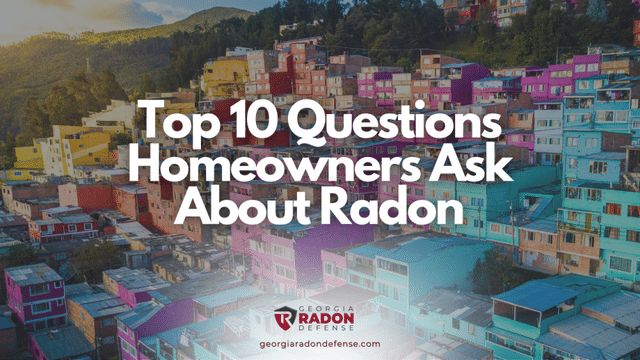Top 10 Questions Homeowners Ask About Radon

Radon is an invisible threat that many homeowners overlook, yet understanding it is crucial for the safety of your family. This comprehensive guide will address the top questions homeowners ask about radon, empowering you with the knowledge to take action.
1. What is Radon?
Radon is a naturally occurring radioactive gas formed from the decay of uranium in soil, rock, and water. It's odorless, colorless, and tasteless, making it undetectable without specialized testing. According to the U.S. Environmental Protection Agency (EPA), radon is a leading cause of lung cancer among non-smokers. Learn more about radon levels and risks.
2. How Does Radon Enter a Home?
Radon seeps through cracks in foundations, construction joints, and gaps around service pipes. It can also infiltrate through well water and building materials. Homes with poor ventilation or situated in areas with high radon levels are at greater risk.
3. How Do I Test for Radon?
Testing for radon is simple and affordable. Homeowners can purchase a radon test kit from retailers or hire professionals for a thorough inspection. The EPA’s guide to radon testing offers detailed advice on choosing the right method. Explore professional radon testing services.
4. What is Considered a High Radon Level?
Radon is measured in picocuries per liter of air (pCi/L). The EPA recommends action if radon levels exceed 4 pCi/L. Even levels between 2-4 pCi/L pose a risk, so mitigation is worth considering.
5. What Are the Risks of High Radon Levels?
Exposure to high levels of radon increases the risk of lung cancer. The EPA estimates that radon causes about 21,000 lung cancer deaths annually in the U.S., with smokers being at even greater risk.
6. How Can I Mitigate Radon in My Home?
Professional radon mitigation systems can significantly reduce radon levels. These systems often involve venting radon from beneath the house through a pipe system and fan. See how successful mitigation projects have improved homes.
7. What Are the Symptoms of Radon Exposure?
Radon exposure itself doesn’t produce immediate symptoms. Over time, prolonged exposure increases the likelihood of developing lung cancer. Regular testing and mitigation are key to reducing long-term risks.
8. Can New Homes Be Built Radon-Resistant?
Yes! Modern construction techniques can include radon-resistant features, such as vent pipes, junction boxes for fans, and plastic sheeting over the crawl space floor. Builders and homeowners should consider radon-resistant construction techniques.
9. Is Radon a Problem Everywhere?
Radon levels vary by location. While some regions naturally have higher radon levels, no area is completely safe. If you’re buying or selling a home, radon should be a key consideration.
10. What Should I Do if My Home Has High Radon Levels?
If testing reveals high radon levels, take immediate action. Contact a certified radon mitigation professional for an assessment and system installation. Find out more about radon mitigation solutions.
Final Thoughts
Radon may be invisible, but the steps to protect your family are clear. Regular testing, mitigation, and informed decision-making can reduce the risks associated with radon exposure. Stay proactive to ensure your home remains a safe haven.
